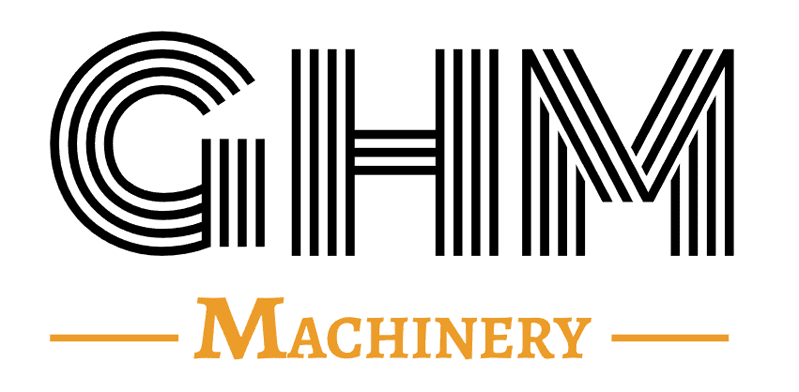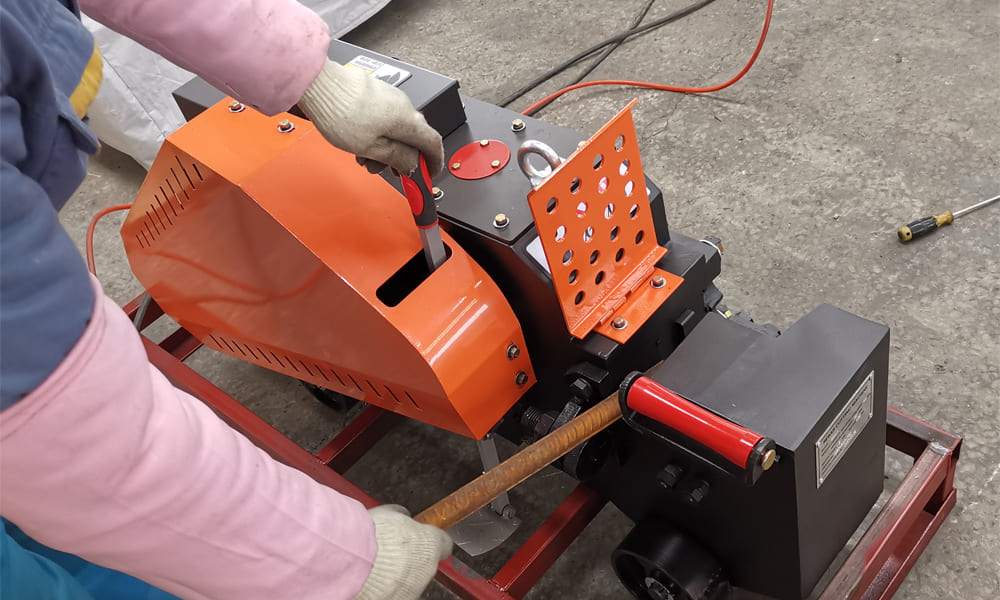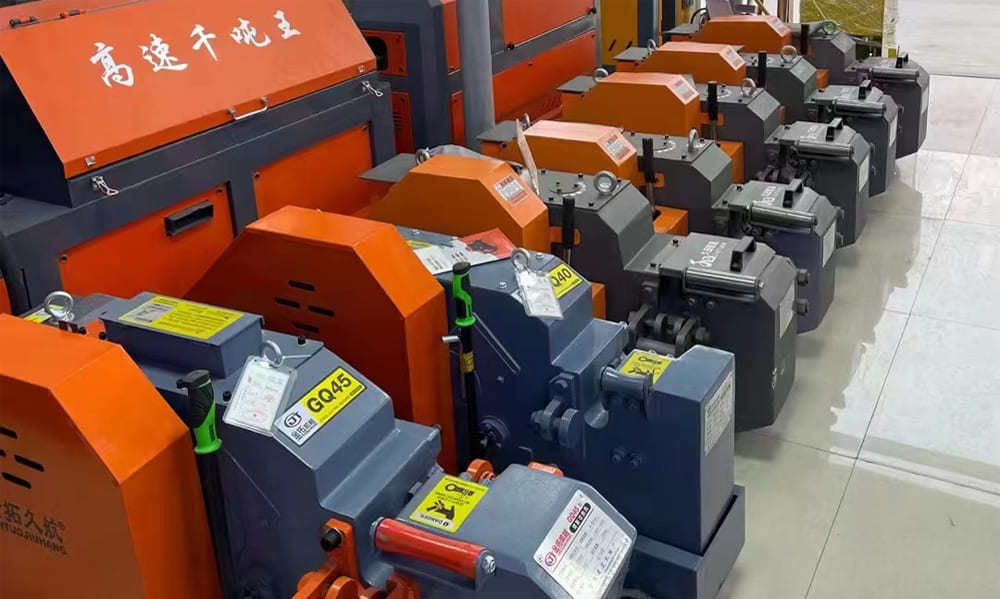A Vertical Rebar Cutting Machine is a vital piece of equipment in the construction industry, designed to cut steel bars (rebar) to specific lengths. This machine is crucial for processing rebar used in various construction projects, including buildings, bridges, tunnels, power plants, and large-scale water-saving initiatives. Compared to other cutting equipment, rebar cutting machines are lightweight, energy-efficient, reliable, and capable of high output. They are increasingly utilized in mechanical processing and small rolling mills, significantly contributing to national economic development.
Types of Vertical Rebar Cutting Machine
Rebar cutting machines can be broadly classified into two main types:
- Fully Automatic Rebar Cutting Machine:
- Also known as electric cutting machines, these devices convert electrical energy into kinetic energy to operate the cutting blade. The entire cutting process is controlled automatically by the machine.
- Semi-Automatic Rebar Cutting Machine:
- These machines require manual intervention to control the intercept before performing the cutting operation.
Additionally, rebar cutting machines can be categorized based on their orientation into horizontal and vertical types.
Horizontal Rebar Cutting Machine
- Structure:
- Components include a motor, transmission system, reduction mechanism, crankshaft, machine body, and knife block.
- Working Principle:
- The motor drives an eccentric shaft via a V-belt pulley and a cylindrical gear reduction system. The connecting rod attached to the displacement shaft moves the slider and the moving blade in a reciprocating motion. Fixed and moving blades, made from heat-treated carbon steel, execute the cutting action.
- The fixed blades are positioned with a front view angle of 3° and a rear view angle of 12°. The gap between the fixed and moving blades typically measures 0.5-1mm, and blocks on both sides of the blade minimize steel bar movement during cutting.
Vertical Rebar Cutting Machine
- Structure:
- Primarily used in rebar processing lines of prefabrication plants.
- Working Principle:
- The motor powers the flywheel shaft through a pair of pulleys. After a three-speed reduction, an eccentric shaft is driven by a sliding key clutch, allowing the moving blade to reciprocate. A handle controls the clutch, which engages and disengages to manage the blade’s up-and-down movement. A hand wheel-operated press adjusts the screw, allowing for the pressing of steel bars of various diameters.
Advantages of Rebar Cutting Machine
- Lightweight: Easy to transport and maneuver on construction sites.
- Energy-Efficient: Consumes less power than other cutting equipment.
- Reliable Operation: Delivers consistent and dependable performance.
- High Output: Capable of cutting large quantities of rebar quickly, enhancing productivity.
By understanding the types, structures, and working principles of rebar cutting machines, operators can effectively utilize these machines to meet the demands of various construction projects, ensuring precise and efficient cutting of steel bars.




